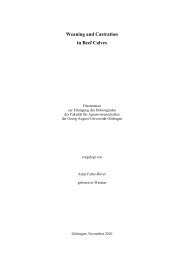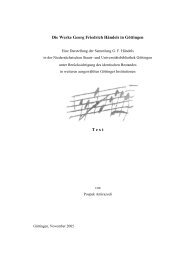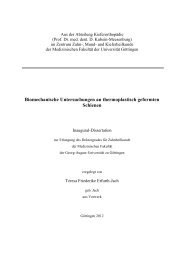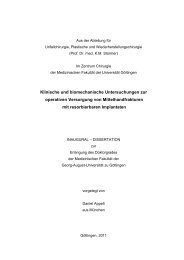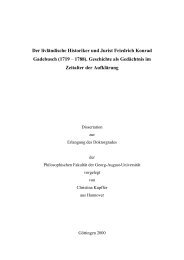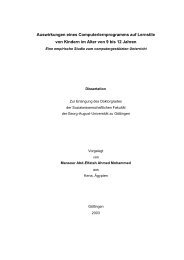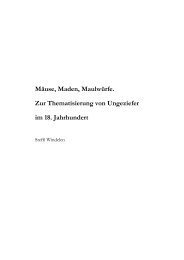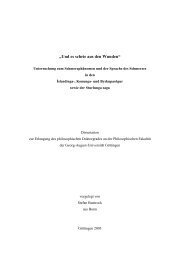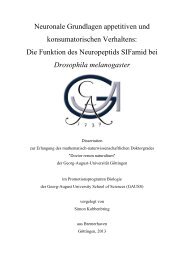Kausales Denken, Bayes-Netze und die Markov-Bedingung
Kausales Denken, Bayes-Netze und die Markov-Bedingung
Kausales Denken, Bayes-Netze und die Markov-Bedingung
Sie wollen auch ein ePaper? Erhöhen Sie die Reichweite Ihrer Titel.
YUMPU macht aus Druck-PDFs automatisch weboptimierte ePaper, die Google liebt.
159<br />
Kemp, C., Shafto, P., Berke, A. & Tenenbaum, J. B. (2007). Combining causal and<br />
similarity-based reasoning. In D. S. McNamara & J. G. Trafton (Eds.), Proceedings<br />
of the 29th Annual Cognitive Science Society (S. 64–70). Austin,<br />
TX: Cognitive Science Society.<br />
Kemp, C. & Tenenbaum, J. B. (2008). The discovery of structural form. Proceedings<br />
of the National Academy of Sciences, 105 (31), 10687–10692.<br />
Kemp, C. & Tenenbaum, J. B. (in press). Structured statistical models of inductive<br />
reasoning. Psychological Review.<br />
Kirk, R. E. (1995). Experimental Design: Procedures for the behavioral sciences (3 rd<br />
ed.), Pacific Grove, CA: Brooks/Cole.<br />
Koslowski, B., Okagaki, L., Lorenz, C. & Umbach, D. (1989). When covariation is<br />
not enough: The role of causal mechanism, sampling method and sample<br />
size in causal reasoning. Child Development, 60 (6), 1316–1328.<br />
Krynski, T. R. (2006). The role of temporal factors and prior knowledge in causal<br />
learning and judgment. Unveröffentlichte Dissertation, Massachusetts Institute<br />
of Technology, Cambridge, USA.<br />
Kushnir, T. & Gopnik, A. (2007). Conditional probability versus spatial contiguity<br />
in causal learning: Preschoolers use new contingency to overcome prior<br />
spatial assumptions. Developmental Psychology, 43 (1), 186–196.<br />
Lagnado, D. A. & Sloman, S. A. (2002). Learning causal structure. In W. Gray & C.<br />
D. Schunn (Eds.), Proceedings of the 24th Annual Conference of the Cognitive<br />
Science Society (S. 560–565). Mahwah, NJ: Erlbaum.<br />
Lagnado, D. A. & Sloman, S. A. (2004). The advantage of timely intervention.<br />
Journal of Experimental Psychology: Learning, Memory, and Cognition, 30<br />
(4), 856–876.<br />
Lagnado, D. A. & Sloman, S. A. (2006). Time as a guide to cause. Journal of Experimental<br />
Psychology: Learning, Memory, and Cognition, 32 (3), 451–460.<br />
Lagnado, D. A., Waldmann, M. R., Hagmayer, Y. & Sloman, S. A. (2007). Beyond<br />
covariation: Cues to causal structure. In A. Gopnik & L. Schulz (Eds.),<br />
Causal learning: Psychology, philosophy, and computation (S. 154–172).<br />
Oxford: Oxford University Press.



